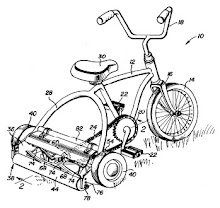One of my first sources of worry about the SDM program was "Opportunity Sets". Not their existence, but their name. The kind of individual who would name a "problem set" an "opportunity set" seemed to me infected by the worst elements of contemporary managerese doublespeak. When I took a break from the corporate world for the academic, I thought I was leaving "learnings" and "incent" behind. Did this mean that I would be surrounded by suit-wearing phonies who actually believed in their golf-themed Successories posters?
Turns out that it's not a problem. My colleagues are My People, engineers and scientists with a leadership-oriented bent. They are honestly interested in solving real technical problems. They have accomplishments from aerospace, civil engineering, IT, consumer electronics, the military, and even the food industry. They have all seen Star Wars. (Except one. We're working on him.)

